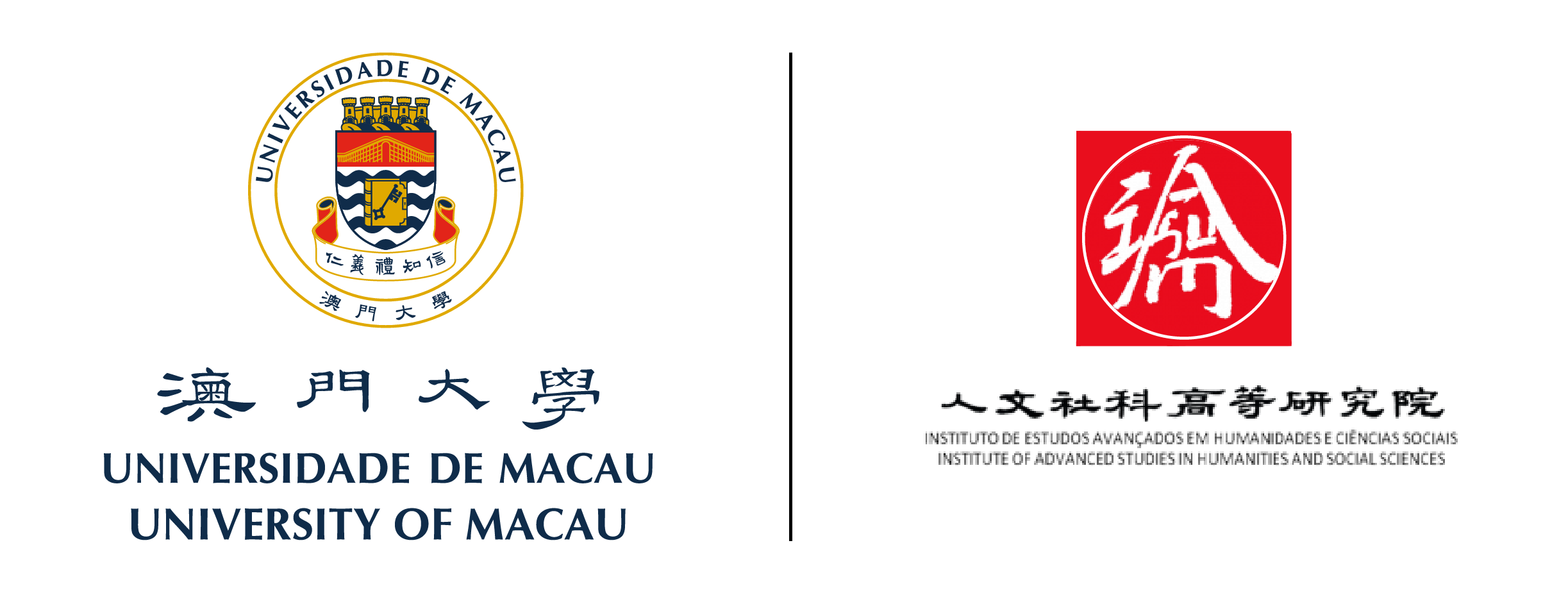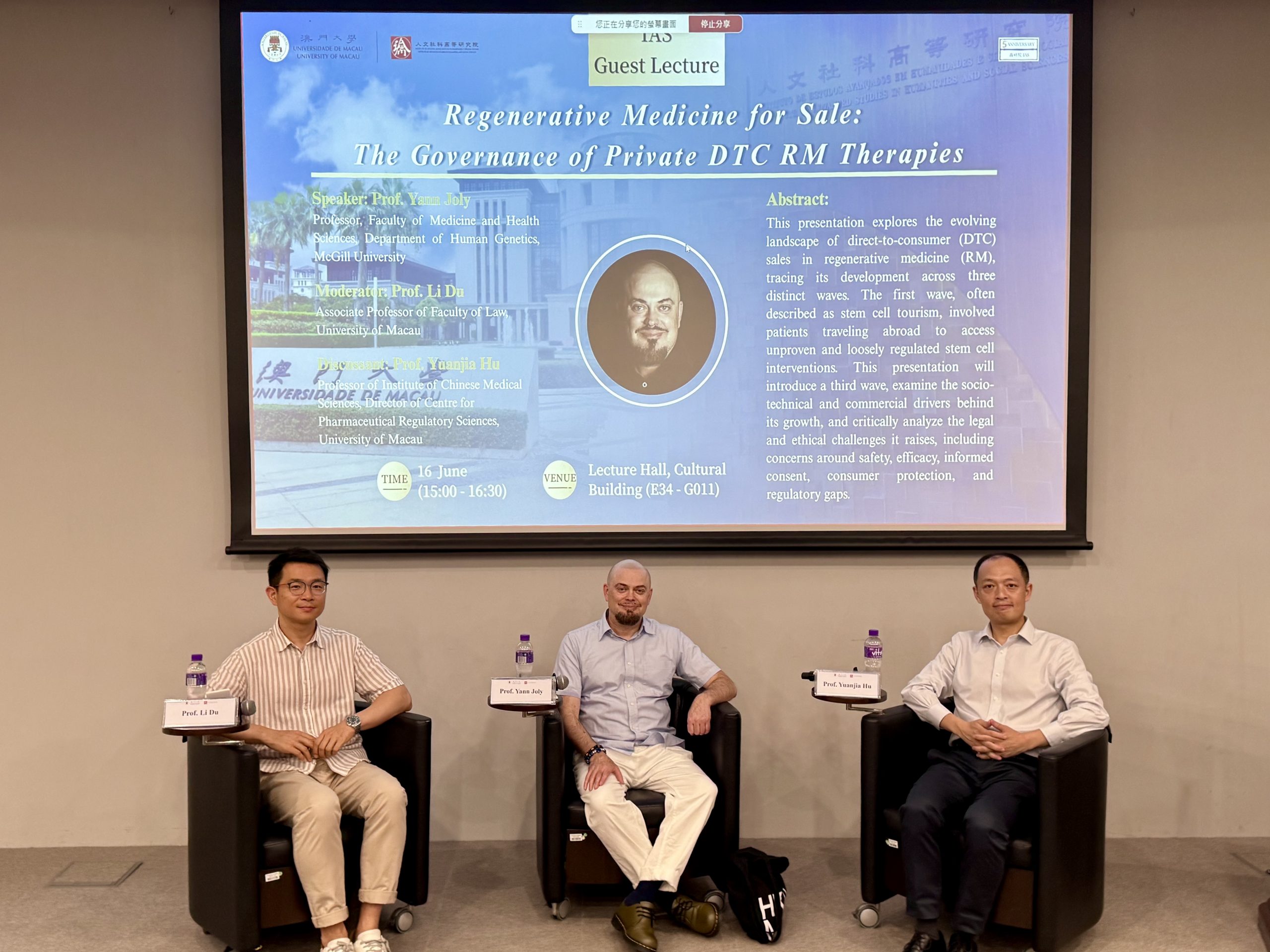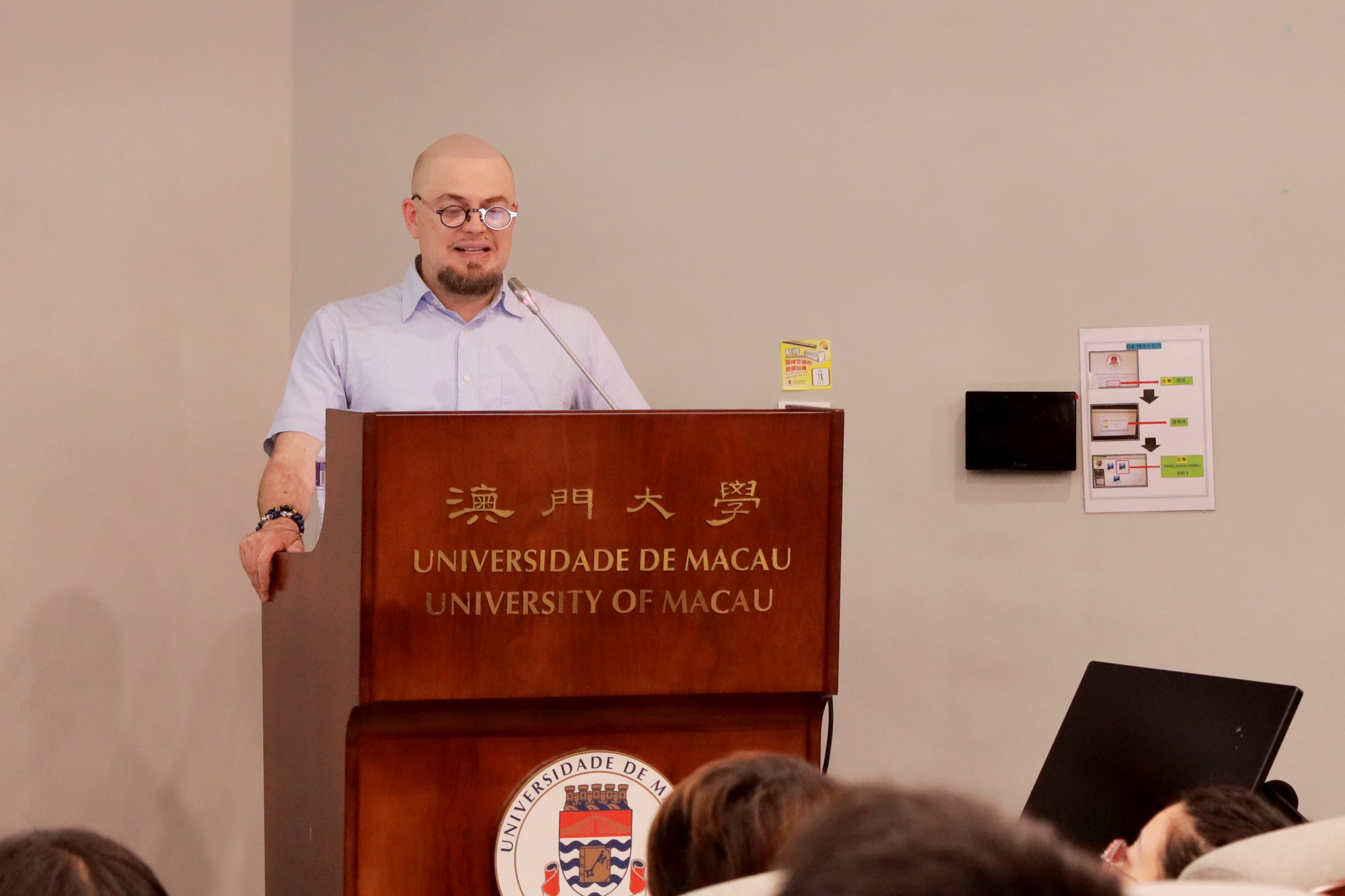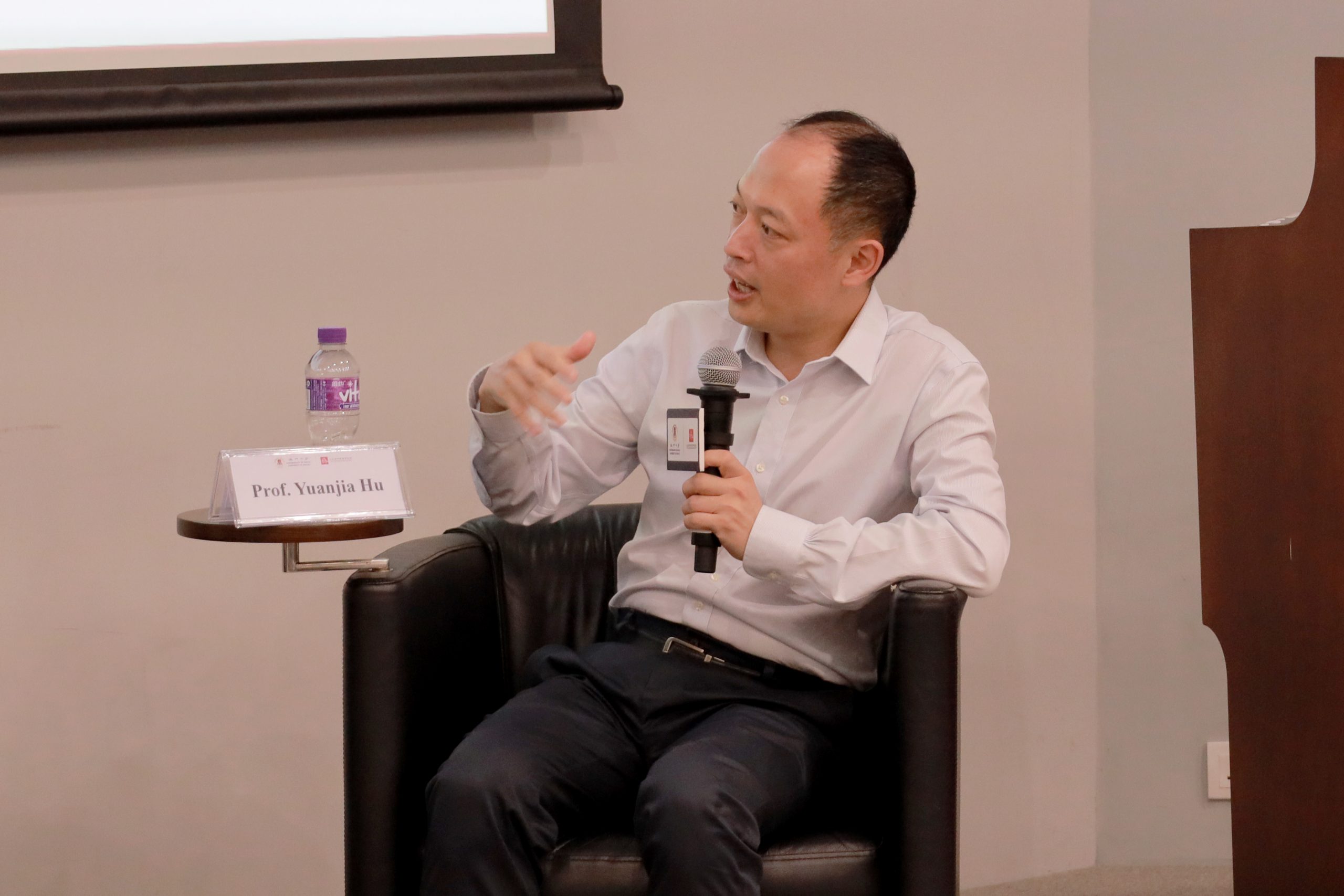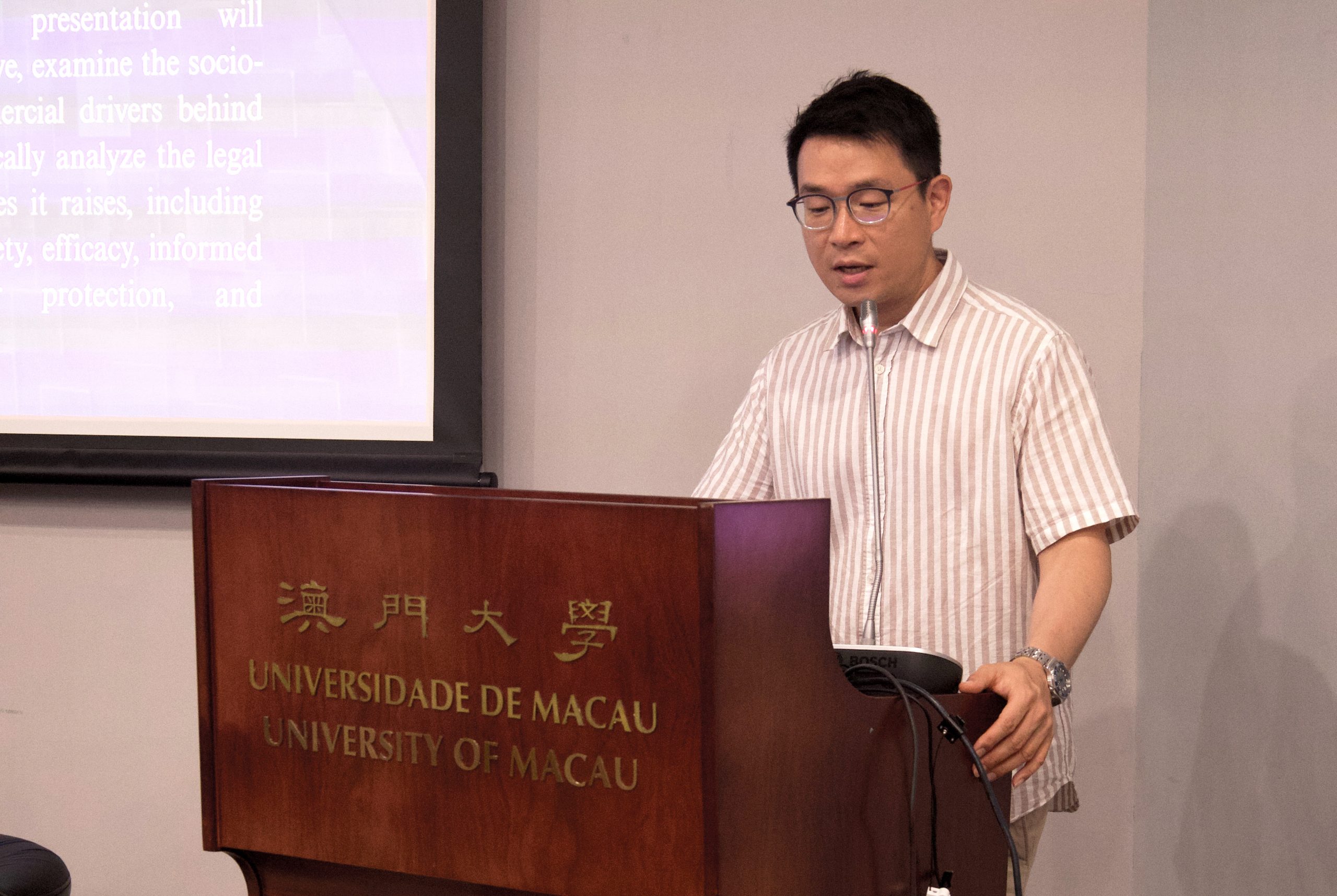
On June 16, the Institute of Advanced Studies in Humanities and Social Sciences (IAS) at the University of Macau successfully hosted a guest lecture entitled “Regenerative Medicine for Sale: The Governance of Private DTC RM Therapies”. The lecture featured Professor Yann Joly from McGill University as speaker, with Professor Yuanjia Hu from UM’s Institute of Chinese Medical Sciences serving as discussant, and Professor Li Du from the Faculty of Law acting as moderator.
Professor Joly thoroughly examined the rapidly evolving landscape of commercially driven Direct-to-Consumer (DTC) Regenerative Medicine (RM) therapies in his lecture. He traced this phenomenon through three distinct historical phases: The First Wave, termed “stem cell tourism”, involved patients traveling to loosely regulated jurisdictions to access unproven stem cell interventions. The Second Wave marked the mainstream expansion of stem cell therapies, with private clinics exploiting regulatory ambiguities in 26 countries (including Australia, Canada, Germany and Japan). The current Third Wave is characterized by RM market diversification, encompassing novel therapies like Evosome therapies, stem cell banking, CAR-T cell treatments, and platelet-rich plasma (PRP), further accelerating commercialization.
Professor Joly provided an in-depth analysis of the latest developments in the direct-to-consumer regenerative medicine market, particularly highlighting the remarkable expansion of the Platelet-Rich Plasma (PRP) therapy market. The current PRP market has reached at least 5.3 times the size of the total stem cell market in 2018, a rapid growth that underscores the urgency for industry regulation. This trend signifies that the third wave of regenerative medicine commercialization has now entered an advanced stage of accelerated development.
Regarding governance objectives, Professor Joly proposed a dual-track core strategy: First, establishing a technologically adaptive legislative system to enable regulatory frameworks to promptly respond to iterations in regenerative medicine. Concurrently, enhancing monitoring enforcement, and sanctions for violations is imperative—both elements being critical determinants of governance efficacy. Joly reiterated the fundamental principle of balancing technological innovation with risk control. Confronting the unregulated expansion of the direct-to-consumer regenerative medicine market, dynamic regulatory frameworks must urgently fill legal voids to guide the industry toward sustainable development while safeguarding medical safety and consumer rights.
The lecture focused on developing a multi-tiered legal intervention framework that includes federal-level regulation of healthcare products and competition law, provincial consumer protection mechanisms, determinations of professional liability for medical practitioners, and medical ethical standards. It specifically highlighted industry self-regulation as a complementary governance tool, while underscoring the value of referencing innovative regulatory models from East Asian jurisdictions such as Japan and South Korea. The discussion was highly engaging, with participants delving deeply into the possibilities of governance, providing valuable insights and recommendations for improving the regulatory framework.

